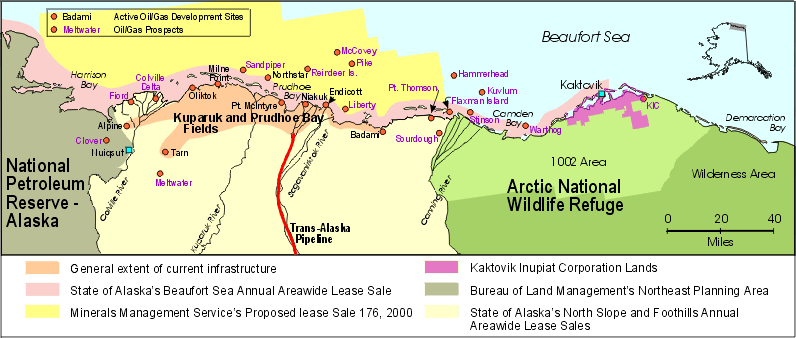The Arctic National Wildlife Refuge. Its name is bandied about all the time, and depending on who’s doing the bandying, it is either the most sacred piece of wilderness left in the United States or a wasted source of critically needed petroleum supply.
As you can probably tell from the photo at the top of the blog, I am a tree-hugger. It’s just as deserved a term, whether used affectionately or derisively, as greenhorn. Notwithstanding the fact that the area of ANWR at risk for oil drilling is a vast expanse of tundra with absolutely nothing resembling a tree for over two thousand square miles, the term describing my penchant for loving up any example of Mother Nature’s handiwork is still applicable. Simply put, emotionally and philosophically I instinctively lean toward the protection of our natural environment and accept without reservation the power of the natural world to rejuvenate our spirit.
I completely understand that all energy production, whether from solar, wind, hydroelectric, geothermal, hydrocarbon, or nuclear, has environmental consequences. I drive more miles than average in a gasoline-only car. I consume conveniences at the rate of most of my fellow Americans. I am not unaware of my hypocrisy. But imposing drilling and its infrastructure in an area of wilderness that currently has no roads and no trails for the sake of what the US Geological Survey estimates is approximately one year’s worth of crude oil and natural gas seems blasphemous to me.
But you can make your own choices, have your own perspective, and we can still be friends. Who knows, my thinking may change after this trip. I may be a tree hugger, but I still have an open mind to go along with my open arms.
I hate to have to admit this, too, along with all of the other ignorance that has been and will be exposed in this blog – which is, after all, about what I am learning in preparation for this once-in-my-lifetime adventure: I really didn’t know much about the Arctic National Wildlife Refuge. And I didn’t understand why in the hell, if it already was protected as a Wildlife Refuge, we were routinely fighting over drilling in an area of the Refuge called the Coastal Plain.
The short answer – I’ll save a somewhat longer answer with educational links to reliable sources for a later post – is that in 1980 when Congress expanded what was then the Arctic Reserve to 19.3 million acres and changed its designation to a Wildlife Refuge, there was a provision included in the legislation known as Section 1002. While almost all of the new Refuge was given the higher protection of wilderness status – no roads, trails, improvements of any kind – Section 1002 required that the Department of Interior undertake studies of the natural resources available in the Coastal Plain. Meaning that the possibility to drill in the 1.5 million acre area leading north out of the foothills of the Brooks Range all the way to the Arctic Ocean from the Canning River in the west to the Aichilik River in the east was left to be determined by future scientific study and Congressional legislation.
The problem is this: The Coastal Plain lies directly east of the oil fields of Prudhoe Bay and the oil industry is hoping that the geologic studies are correct and that billions of barrels of oil and natural gas are waiting there.
What makes that a problem is this: The Coastal Plain is where over a hundred thousand caribou migrate every June and July to have their calves before the mosquitos chase them back up into the mountains. It is where millions of migrating birds – from Europe, Asia, South America, Africa, Australia and all 50 states – come to nest each summer and fatten up on mosquitos and tundra plants for the next leg of their disparate journeys. It is where polar bears hunt for seals along the coast in the summer and den in the winter. It is an integral part of a wilderness area that was created specifically to encompass entire interrelated ecosystems and preserve them not only for philosophical and recreational reasons, but to enable the study and understanding of the workings of nature’s machinery before it has been modified by man.
Bet you can guess which position I’m embracing.
